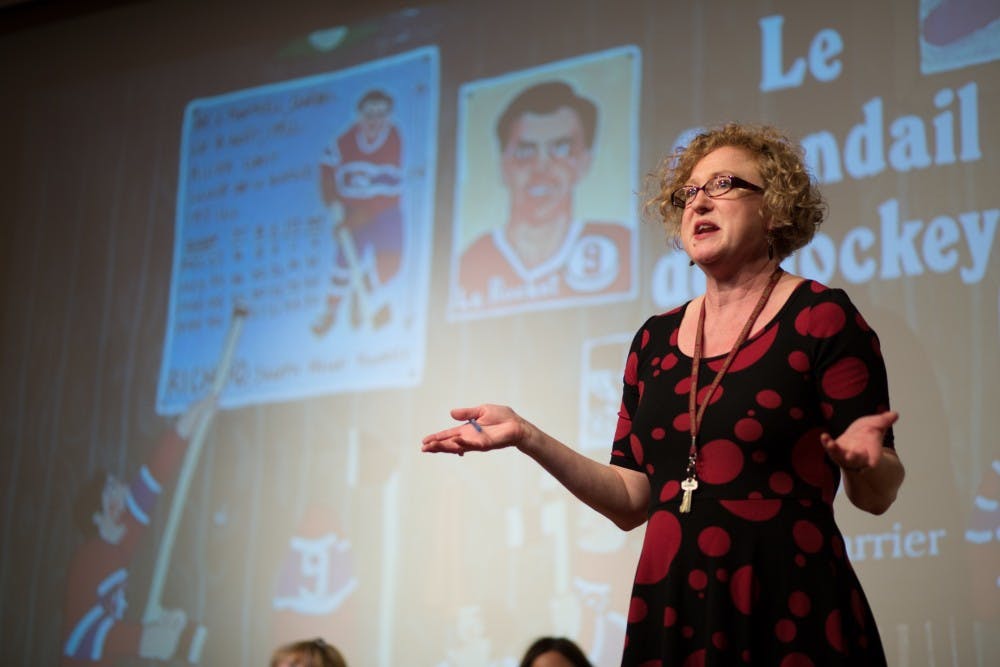'Children's Books from Around the World' discusses international literature

Professor Amy Ransom speaks about "Le Chandail de Hockey," a french children's book, during a panel discussion about reading as a citizen of the world in the Park Library Auditorium on March 28.
Central Michigan University students read books from around the world on Tuesday.
“Children’s Books from Around the World: An All Day Cultural” took place March 28 in the Charles V. Park Library.
The event was hosted by the Clarke Historical Library, the Department of Foreign Languages, Literatures and Cultures, the Department of English, Language and Literature and English Language Institute.
International students read in the Baber Room to kick off the event at 10 a.m. They read stories in their native language and then in English to help them work on their spoken proficiency.
Ten CMU students from around the world at 1 p.m. read children’s books in their native language, then provided the audience with a summary in English.
The last reading of the day began at 3:15 p.m. CMU students who are learning German, French and Spanish read books in the language they are studying, then provided an English summary for the audience.
Chicago senior Amber Augustin was one of the student readers.
“It was honestly a good way for me to practice my French and to see the skills that I have, in terms of pronunciation,” Augustin said. “My teacher presented the opportunity to us to do this, and I thought it was a nice idea.”
A panel discussion titled, "Reading as a Citizen of the World: Cultural Transmission and Intercultural Dialogs in Children's and Young Adult Literature,” took place at 7 p.m. in the Park Library Auditorium. Amy Ransom, professor of French, moderated the discussion. The panel consisted of Anne Alton, professor of English; Carolina Gutierrez-Rivas, assistant professor of Spanish; Gretchen Papazian, assistant professor of English; and Daniela Richter, associate professor of German.
Each of the professors discussed how children’s literature, and literature in general, is important and how it impacted each of their lives. They also discussed the culture of the international literature they had picked to present to the audience.
Alton discussed differences in American, Canadian, and British literature. Even though these are all English-speaking countries, a piece can have differences in each country. She gave the example of how American literature will translate “post” to “mail” instead.
Even though the panel mostly discussed foreign literature, Papazian, who teaches American literature, spoke at today’s event because of diversity.
“America is a diverse country,” Papazian said. “It’s not a unified singular culture. Often times when people define American culture, they are really only talking about one version of American culture, and that’s not necessarily our strength. I think America has strength of openness and negotiating conflict. I think by itself diversity is important. Where we have strength is in cultural diversity.”
Professor Richter teaches German and is a native of East Germany. She discussed her experiences of being a foreign exchange student in America and the types of literature she discovered while she was here. She also discussed the difference in American adaptations of German literature.
Professor Gutierrez-Rivas is a Venezuela native. She brought a book to the panel from her childhood that she enjoyed, and discussed the cultural differences between Hispanic literature and American literature.
The panel ended with a Q & A session between the audience and panelists, followed by a reception in the Baber Room.



